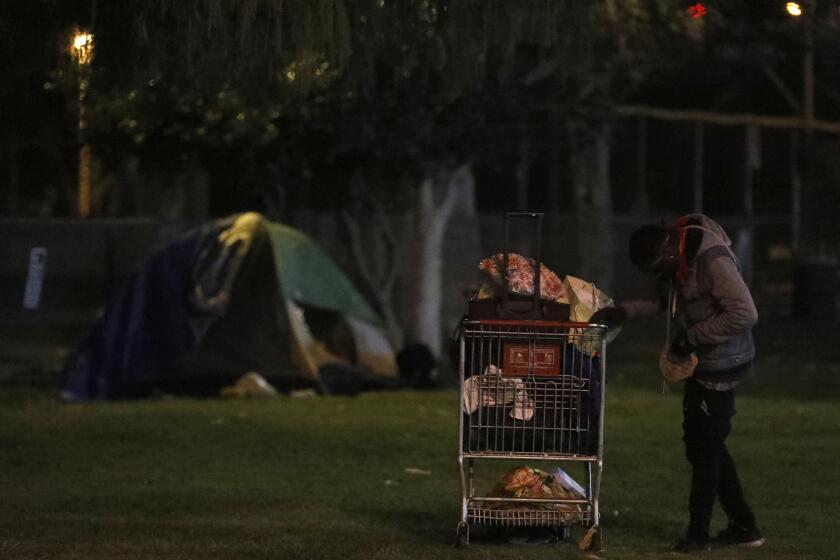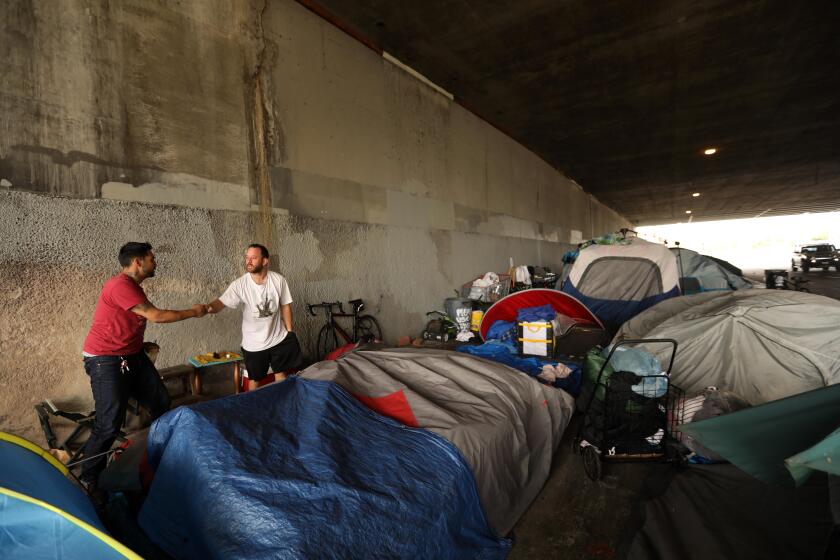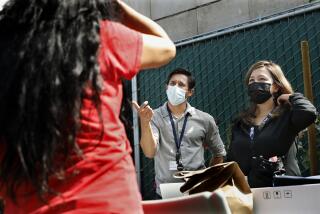Finding patients where they live: Street medicine grows, along with homeless population
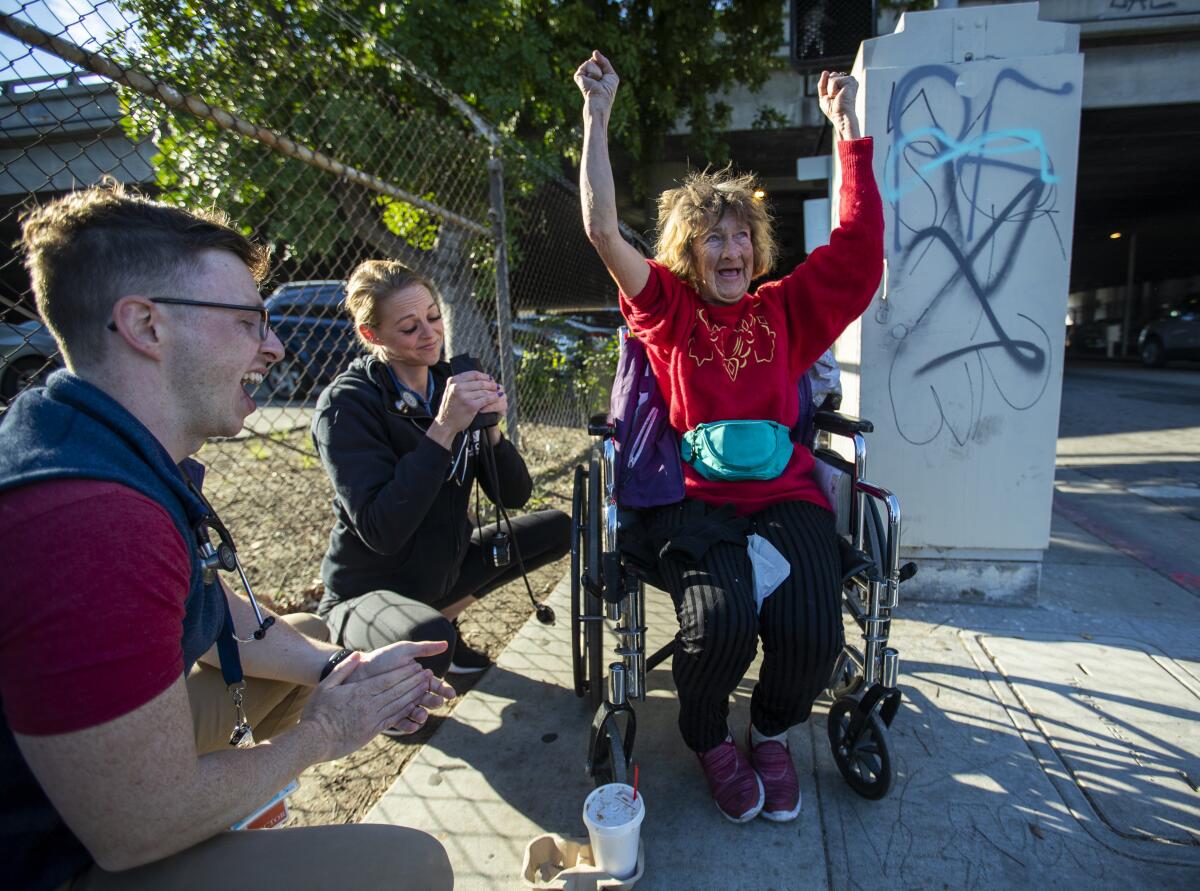
- Share via
The white van navigated streets lined by tents in downtown Los Angeles. From the back seat, Brett Feldman peered at the encampment’s residents scattered along the sidewalk.
Feldman is a physician assistant here to treat someone who is sick. But before he can administer tests or medicines, he must perform a far more unusual task among medical providers: finding the patient.
The four-person medical team Feldman leads offers care to some of the sickest people in L.A. by meeting them where they live, on the street. The patients don’t have to schedule appointments, find transportation to the clinic, pick up prescriptions or pay for their treatment — barriers that make homeless people much sicker and more likely to die young than others.
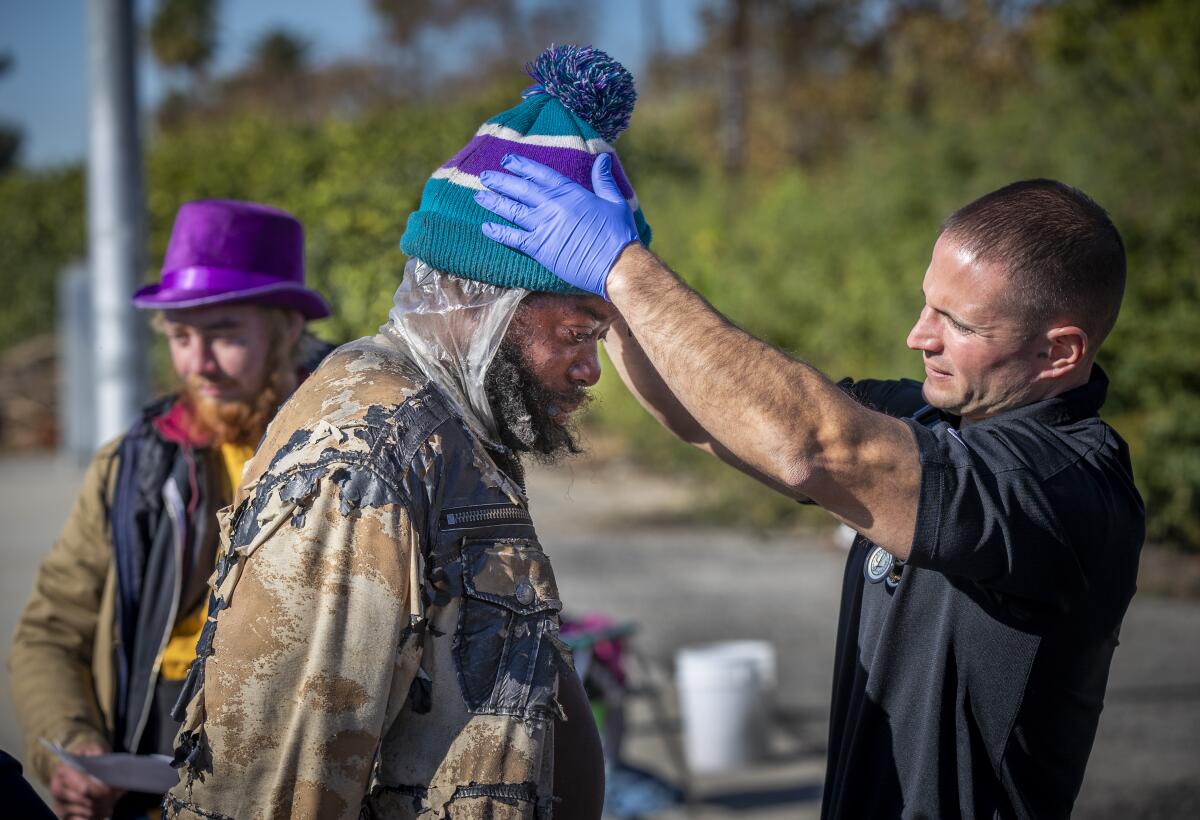
Feldman spotted his patient, Tracy, curled up in a wheelchair on the sidewalk. The team emerged from the van wearing backpacks bulging with medicines and ointments.
A nurse gingerly unwrapped a bandage on Tracy’s ring finger. The white gauze had darkened from dust. Tracy grimaced.
For years she wore a metal ring that damaged her skin. Underneath the cloth, her skin had become so eroded that there was none left where the ring once rested. A strip of white bone bisected her finger.
Just trying to survive on the street can cause people to neglect serious health conditions such as HIV and heart and lung problems. Other issues that start out small, like Tracy’s finger, can become dangerous or even life-threatening because of the rough living conditions.
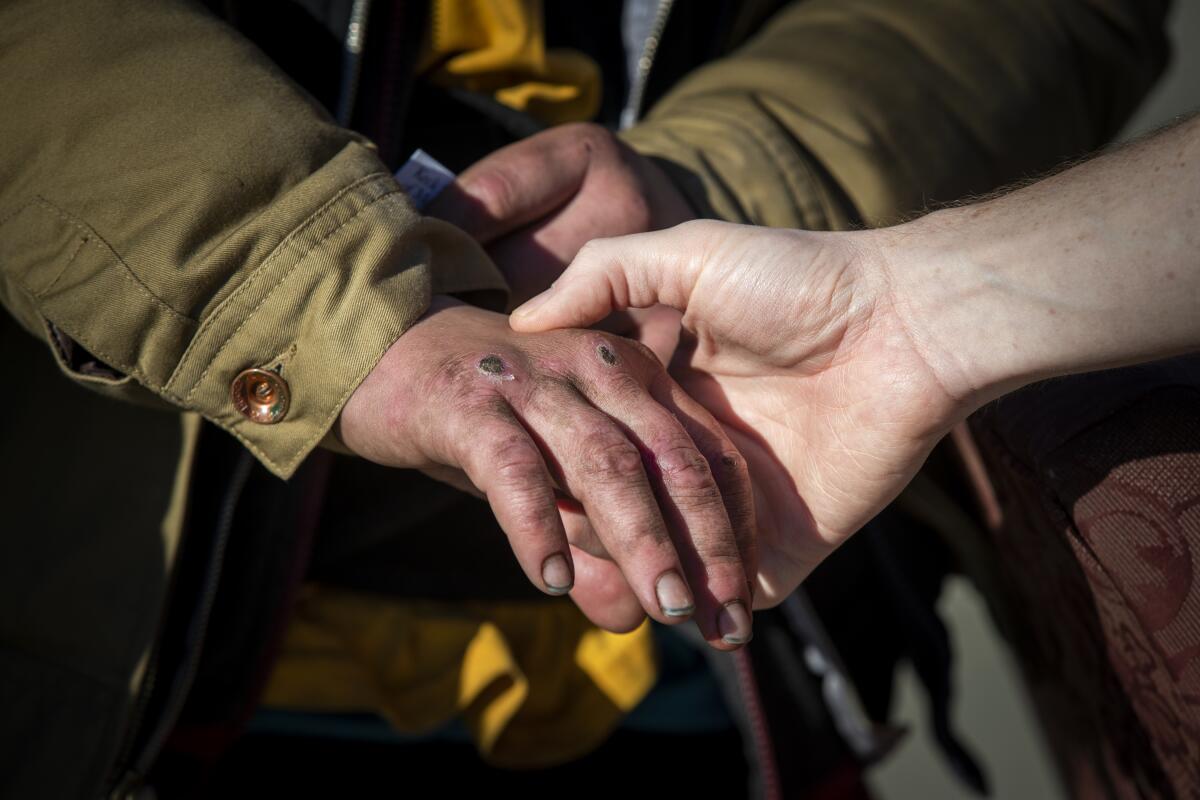
Feldman told Tracy that the wound wasn’t healing with medicines alone because it was too deep. She needed to go to the hospital, possibly to get a skin graft, he said.
“I’m so tired,” she said, resistant.
“When you get to the hospital, you’ll be able to sleep safely,” Feldman said. “I know what you go through out here.”
Tracy agreed. He called an Uber to take her in for treatment.
The Times is launching a new section on latimes.com to bring together our best coverage to date on both homelessness and housing.
Funded by USC, Feldman’s team is one of several providing medical care on the street for L.A. County’s growing homeless population. There are about 59,000 people in the county living in streets, shelters or vehicles.
These so-called street medicine teams are multiplying nationwide as well, with more than 90 across the country and some doctors weighing whether the practice should be taught in medical schools. The shift acknowledges not just the humanity of homeless people but also a nationwide failure to house them and provide healthcare to everyone who needs it.
Each weekday morning at 8, the USC team heads out in its van, the trunk piled with blankets, tents, mattresses and socks.
Feldman first identifies patients by connecting with homeless people already admitted to USC’s county hospital. After the patients are discharged, the team follows up with them wherever they live, a twist on a doctor house call.
Help us inform our reporting about the homelessness crisis in California by submitting your questions.
Often these patients will point them to other people nearby who are even more ill.
“We get referrals from one bridge to the next,” Feldman said.
In total, the team has more than 70 patients that they visit regularly, sometimes multiple times a week.
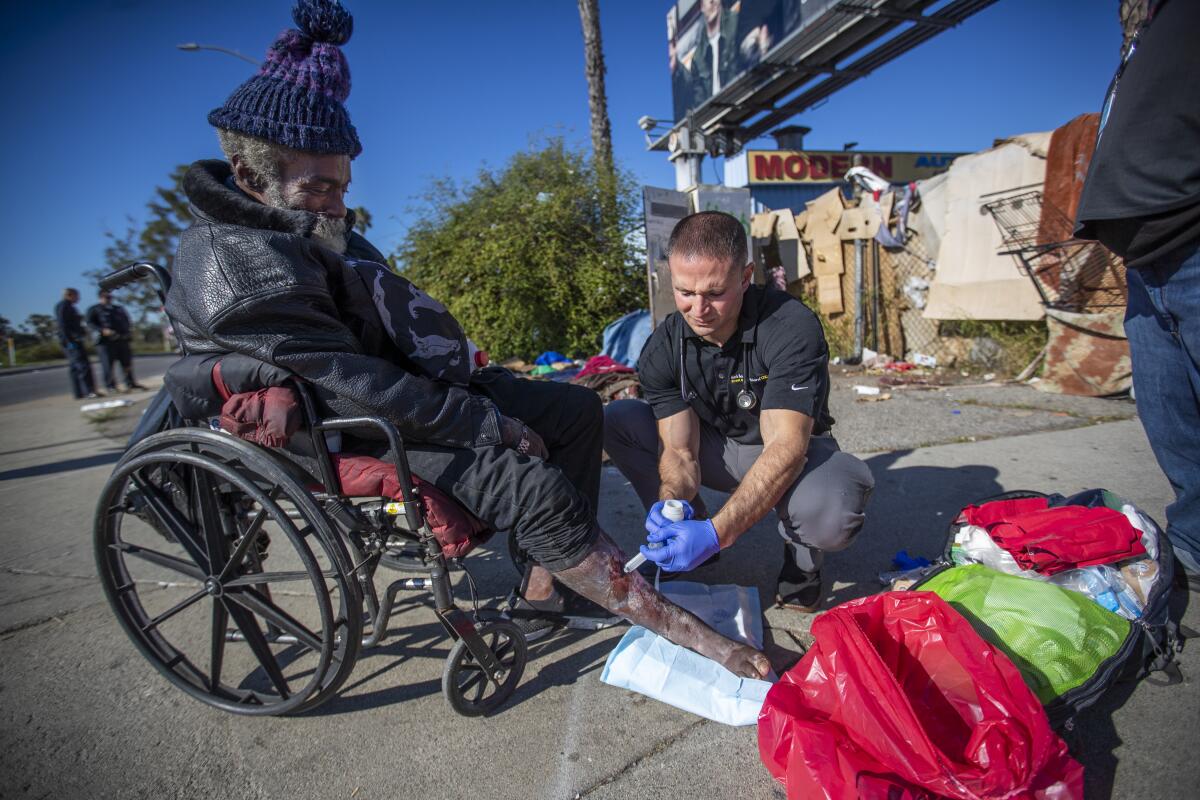
Feldman squatted next to Tracy’s wheelchair and cleaned cuts on her feet. This “servant’s position,” which requires him to gaze up at her, makes the team members less intimidating, he said.
Patients are often suspicious of the team at first. Living on the street has accustomed them to everything. including people averting their gazes when they walk by and frequent threats of theft or violence.
Feldman approaches patients cautiously, as though they may spook, and smiles gently.
The Uber arrived to take Tracy to the hospital, but she would not get in. Feldman warned her that if she didn’t receive treatment for her finger, it could require amputation. She still refused.
Feldman told the Uber driver to leave without her. The team climbed back in the van.
Though disappointed, Feldman accepted Tracy’s reluctance as normal. Many homeless people are distrustful of the medical system, and healing that relationship takes time, he said.
When you ask people why they’re homeless, he said, “what you don’t hear is lack of affordable housing, gentrification, minimum wage.”
“The cause is emotional poverty, spiritual poverty,” he said. “They feel discarded by society.”
Feldman, 38, has a long history providing medical care to the homeless. Before launching this program last year, he treated patients in shelters and on the street in and around Allentown, Penn., where he lived, for more than a decade.
Now vice president of the Street Medicine Institute, he has helped 40 other similar programs launch around the globe.
He was drawn to L.A. because of the need, he said. The region has an unusually high proportion of people living on the streets each night.
In New York City, due to the availability of shelters, only 4% of the homeless population lives on the street, compared with 75% in L.A. County. Since homeless tend to access health services through shelters, L.A.’s homeless are likely obtain much less medical care, he said.
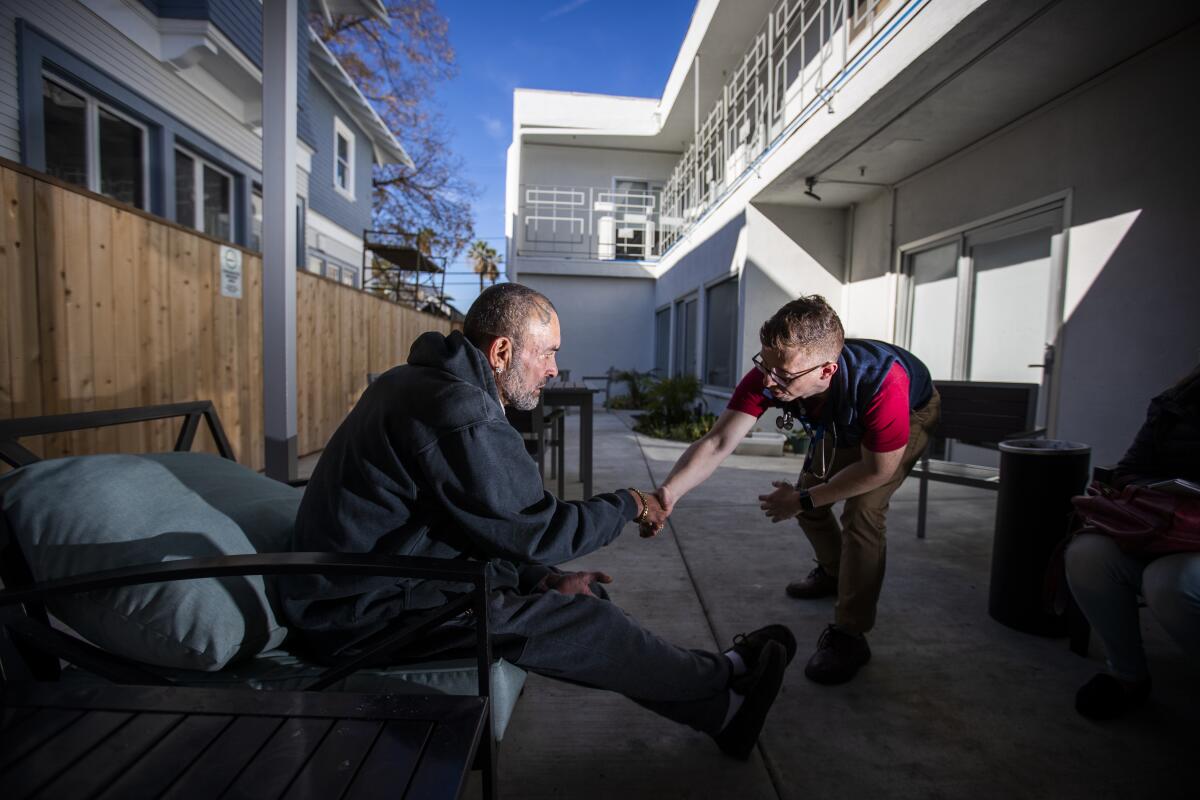
“Our vision is that all unsheltered have access to basic healthcare,” Feldman said.
The scenes that Feldman and other providers witness on the street are heart-wrenching: people drinking water dribbling from fire hydrants. Children returning from school to the tents where they sleep. Patients developing frostbite.
Joseph Becerra, 47, was homeless for 15 years in L.A.. Now he works as the USC team’s community health worker, guiding the others through the world he once inhabited.
Becerra said that even if someone becomes homeless because they lost their job or couldn’t afford their rent, living on the street then pushes them to steal to survive, turn to drugs to numb and stay awake all night to guard their belongings. Sleeplessness combined with scarce water and food can disconnect people from reality and make it harder to escape poverty, he said.
Becerra drives the team’s van and keeps track of patients’ whereabouts by learning what stores they frequent, who their friends are and where they go when their streets are cleared by city workers. He judges whether an encampment is safe to enter and monitors how other residents are responding to the team when they are there. Street medicine teams in other cities make the rounds at night, but Becerra insists they work in the mornings.
“We’ve had weapons pulled on us,” Becerra said. “It’s just the nature of the beast.”
A few days after visiting Tracy, Becerra parked the van next to a tent under a freeway overpass about a mile from skid row.
Their patient, Dianna Hill, pushed her wheelchair to a patch of sunlight on the sidewalk as the team encircled her.
“My brain ain’t working right now,” said Hill, 61. “It was so cold — I couldn’t sleep.”
When Hill became the team’s patient two months prior, her blood pressure was high, Feldman said. Since hypertension has no symptoms, getting patients to pay attention to that number can signal a mindset shift, he said.
“The only reason you would care about it is if you care about your future,” Feldman said.
Feldman slipped a blood pressure cuff around Hill’s arm. She cracked a joke about her boyfriend keeping her warm the previous night during chilly Santa Ana winds. She thanked Becerra for a new pair of socks, winking at him and kicking her knee-highs into the air.
Her blood pressure reading was normal, Feldman told her. Hill pumped her fists, beaming.
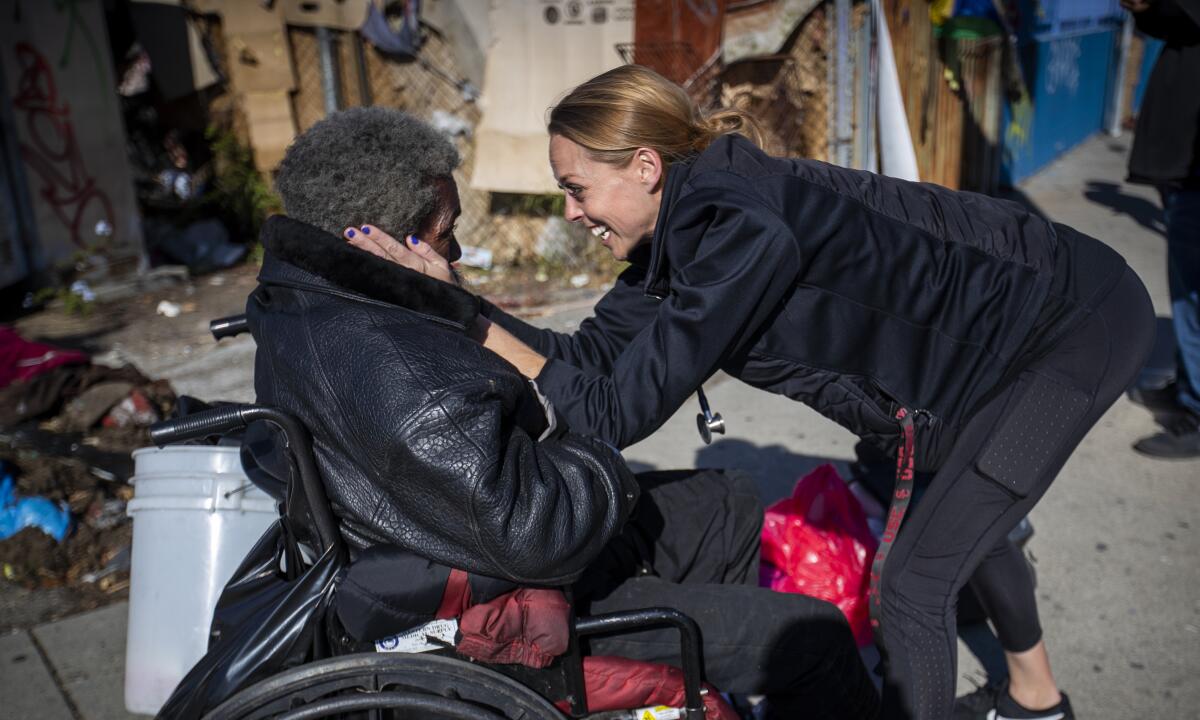
Half an hour later, the team arrived at an empty lot next to a freeway on-ramp in central L.A. littered with grocery carts and piles of discarded clothes.
The patient, Alfred Mills, 62, wore a sheepish grin and a purple beanie stretched over his white curly hair as the team approached him.
Mills had lived here for years, in a narrow space between two chain link fences.
He was born in Compton and became estranged from his family over the past decade. For seven years in his youth he worked as a bodyguard for the singer Little Richard, he said.
Late last year, the team’s nurse, Gabrielle Johnson, helped Mills reconnect with his family. She contacted them via Facebook and arranged for them to video chat.
This morning, Johnson scrolled through photos of that first video chat on her phone. Mills hadn’t spoken to his mother in more than a decade. He thought she was dead. She thought he was dead.
“That’s my mom,” Mills said, nodding to Johnson’s phone.
Another big change was underway for Mills on this day. He had begun packing up his belongings on this day because the next, he would be moving into an apartment.
The USC team can help people move into housing and expedite the process by signing paperwork saying there’s an urgent medical need for them to get into assisted living.
Feldman told Mills they will come visit him once he is settled. Mills said he was a little nervous.
“I haven’t had a place of my own in a long time,” Mills said.
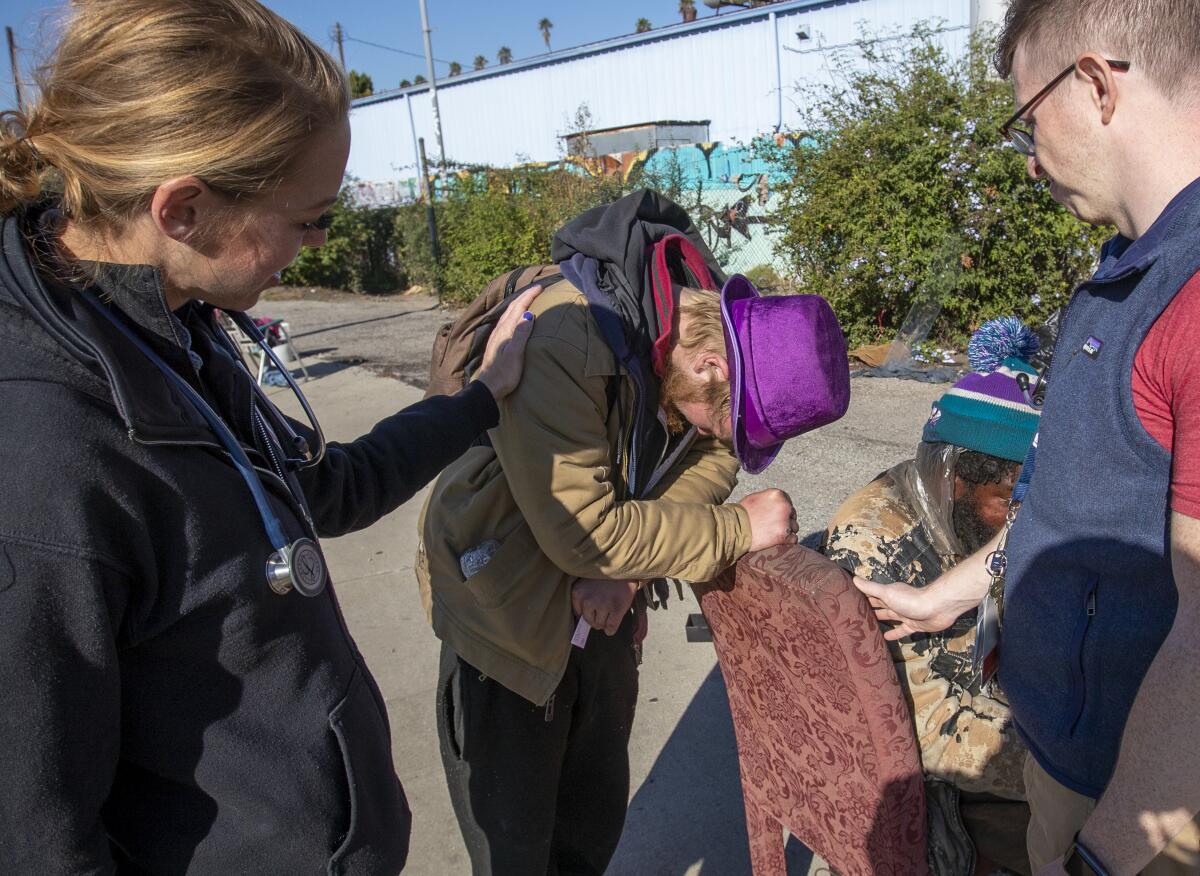
More to Read
Sign up for Essential California
The most important California stories and recommendations in your inbox every morning.
You may occasionally receive promotional content from the Los Angeles Times.
